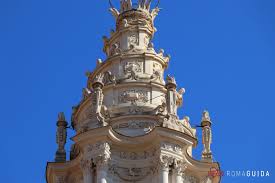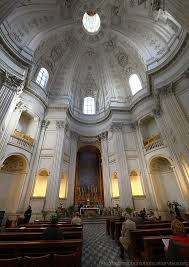The drama of space: Borromini
The space is infinite as galaxy or infinitely little as atom but we are humankind and therefore we have our proportions, above all to architecture, here drama is from ancient greek δραμα, this is drama this is action, therefore we can see and consider that architect is very impressive, classic, neoclassic or other; certainly in this other is present Francesco Castelli(1599-1667) called Borromini, he exalted the dynamicity, almost futurist space, Futurist matter of architecture, he has dynamized the space and he has more preferred the form than use, we can see Saint Carlo to four fountains, Rome, where all is dynamic and Borromini announces this strong vigor of perimeter on facade(Figs.1-3), but it isn’t alone and empty announce that hasn’t following, because it is continues to intern(Fig.4), the dome is likewise dynamic and although the space is very modest the compensation is in form, that between empty and saturated, as the columns(Fig.6), that has space that is long and short; this movement, very strong, is soul of this church and of Borromini. We can consider that Francis is very revolutionary, certainly it, but he has adopted a simple and elementary method, used from ancient architecture of Egypt, this is the geometry; he has used geometry to different criterion, this is; he isn’t rational as Renaissance he isn’t aseptic but he has given to space life, the architecture life and involve faithful or visitor, all is sacred in church because they must pray, but nothing suggest that that is a church. Same the concept that he adopted to Saint Ivo, other church(Figs.7-10) where he is likewise dynamic and contradictor as Saint Carlo, because the dome is similar(Fig.10), likewise lively and between empty and fall(Figs.9, 11), he concedes to façade a moment of Renaissance because concave shape of façade(Fig.12) is very rational but he remember that Renaissance is past, because convex shape up is baroque, therefore concave are hands that embrace faithful and in church this dynamic spaces seems a theatrical stages (Fig.13); thereupon all is spectacle; also this church we can know that is so alone somebody has indicated, but we can confuse it to theatre.
Alessandro Lusana















.jfif)
No comments:
Post a Comment